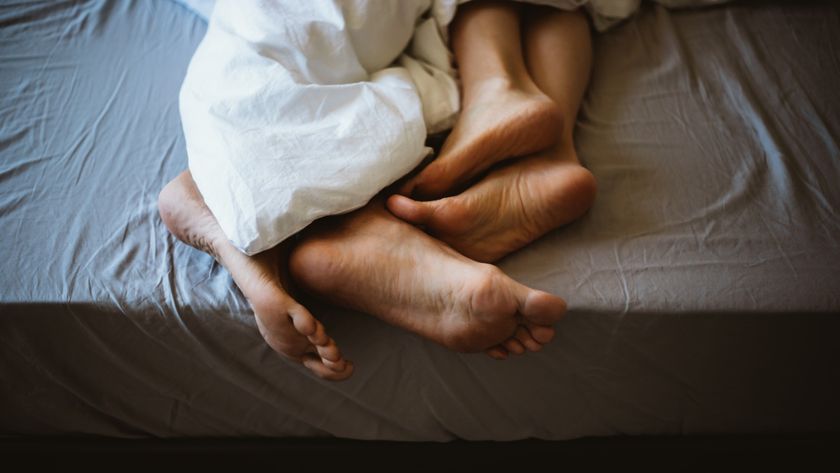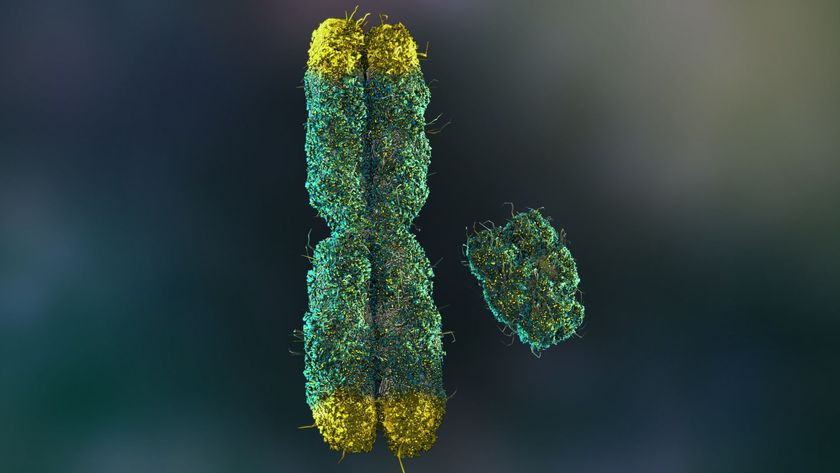Fertile Imagination: Ovulating Gals Have More Sex Fantasies

Women have more sexual fantasies during fertile periods of the month, a new study finds.
The research is one of many studies finding differences in women's sexual interest across the menstrual cycle. For example, a 2007 study in the journal Hormones and Behavior found that around ovulation, when pregnancy is possible, women say they prefer macho, masculine guys. An April 2011 study even suggested that women who are in the more fertile phase of the month are more likely to see Georgia O'Keeffe's suggestive paintings as erotic.
The new study finds that sexual fantasies increase, and lead to more arousal in women, during fertile periods. Women also reported a higher proportion of men in their fantasies during fertile times of the month.
"When it mattered most, women were fantasizing more about men," said study author Samantha Dawson, a graduate researcher at the University of Lethbridge in Alberta, Canada.
Tracking fertility
Dawson and her colleagues focused on fantasies because such sexual daydreams aren't dependent on the availability of sex partners or other outside forces. That means fantasies may be more representative of sexual interest than how much real-life sex a woman has, Dawson told LiveScience. [How to Spot a Fertile Woman]
The researchers paid 27 single heterosexual women, mostly college students, to keep a daily online diary of their sexual fantasies for one month. None of the women were on hormonal birth control. By counting back from the last menstrual period, the researchers targeted a 10-day window in which each woman would likely ovulate.
Sign up for the Live Science daily newsletter now
Get the world’s most fascinating discoveries delivered straight to your inbox.
During those 10 days, each woman took a do-it-yourself urine test to detect ovulation, much like the fertility tests available at drug stores. The tests were in neutral packaging, and women weren't told that they being tested for ovulation.
Varying fantasies
The women in the study reported, on average, 0.77 sexual fantasies a day — much higher than earlier work, which had suggested that men fantasize about once per day and women only once a week. Those earlier studies, however, asked participants to look back over time and recall their fantasies. A day-by-day approach is likely more accurate, because it does not rely so much on memory, the researchers reported online March 10 in the journal Archives of Sexual Behavior.
In the three days surrounding ovulation, fantasies became more frequent, reaching an average of about 1.3 per day. Women's reports also indicated these fantasies were more arousing than fantasies during nonfertile periods. [Sex Quiz: Myths, Taboos & Bizarre Facts]
The researchers expected to see fertile women become more "malelike" in their fantasies during fertile periods, given this increased interest in sex. Men generally report that their fantasies are more visual and explicit than female fantasies, which tend to contain more focus on emotion. But in fact, women actually became more femalelike in their fertile fantasies.
"They're still focusing on the emotions and the feelings that they have toward this partner in the fantasies as opposed to what the partner looks like, how masculine they are and what sexual acts they're actually engaging in," Dawson said.
Gender and fertility
The researchers did find, however, that women's interest in men peaked during fertile periods. Women are generally more fluid in their fantasies than men, Dawson said. One 2006 study presented at the International Academy of Sex Research in the Netherlands found that 25 percent of heterosexual women reported that their fantasies included other women, while only 10 percent of heterosexual men included other men in their sexual fantasies.
In the current study, 52 percent of participants reported fantasies that included women. Still, fantasies were primarily populated by men, with about 95 percent male characters across the menstrual cycle. During ovulation, however, the proportion of men went up by a percentage point or so, suggesting that fertility hormones do influence straight women's sexual interests.
"You're going to want to have sex with someone who can actually pass genes on to you, so a man versus a woman," Dawson said.
The researchers also had the women look at images of masculine and feminine men and women at three points across the menstrual cycle, but they did not find more interest in masculine men, or men in general, during fertile periods. The lack of a finding probably has more to do with the fact that the same photographs were repeated at each session than anything hormonal, Dawson said.
The message of the research is that psychologists need to be careful when studying female sexual desire, Dawson said.
"It's really important that we are conscious in these changes of female sexuality when we are researching components of women's sexual interest," Dawson said, adding that little things could make a big difference, "even the timing of when they're answering the questionnaire or when we're assessing sexual arousal."
You can follow LiveScience senior writer Stephanie Pappas on Twitter @sipappas. Follow LiveScience for the latest in science news and discoveries on Twitter @livescience and on Facebook.

Stephanie Pappas is a contributing writer for Live Science, covering topics ranging from geoscience to archaeology to the human brain and behavior. She was previously a senior writer for Live Science but is now a freelancer based in Denver, Colorado, and regularly contributes to Scientific American and The Monitor, the monthly magazine of the American Psychological Association. Stephanie received a bachelor's degree in psychology from the University of South Carolina and a graduate certificate in science communication from the University of California, Santa Cruz.











